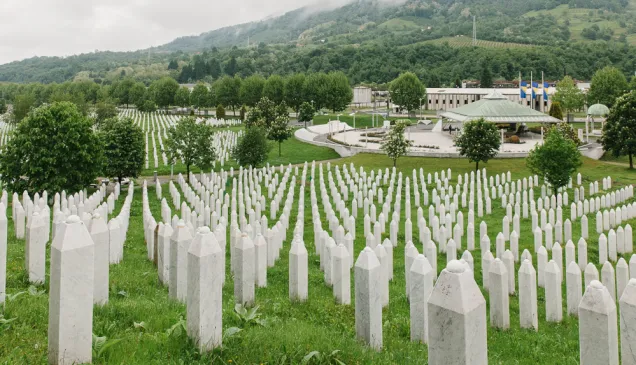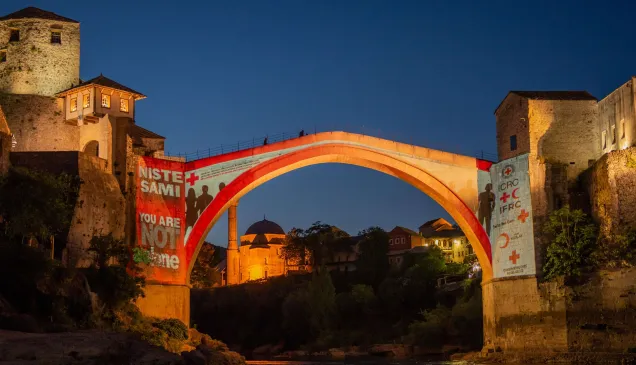Remembering Srebrenica, 20 years on
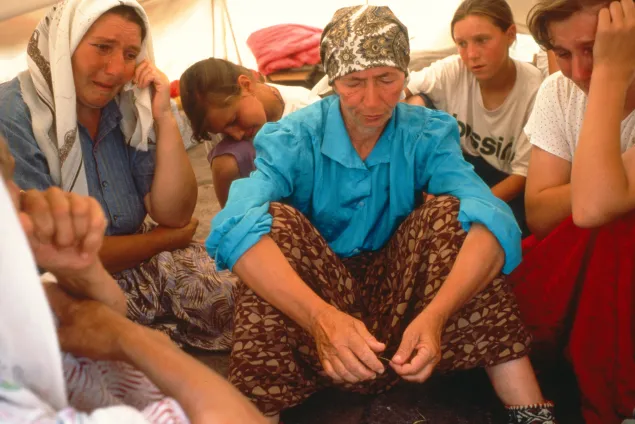
In the days after the fall of Srebrenica, those who had fled the town started to arrive in Tuzla. During the first two weeks, ICRC staff took personal risks to pick up people who could not make it all the way on foot. These people were picked up in the no man’s land.
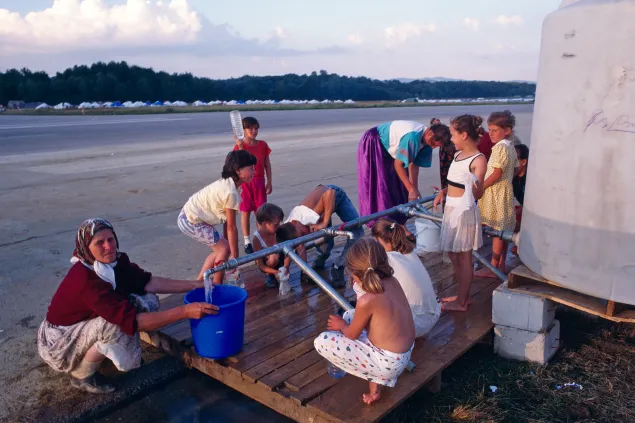
Tuzla airbase, Bosnia-Herzegovina, 1995.
Displaced persons were provided with emergency relief, food, water and sanitation.
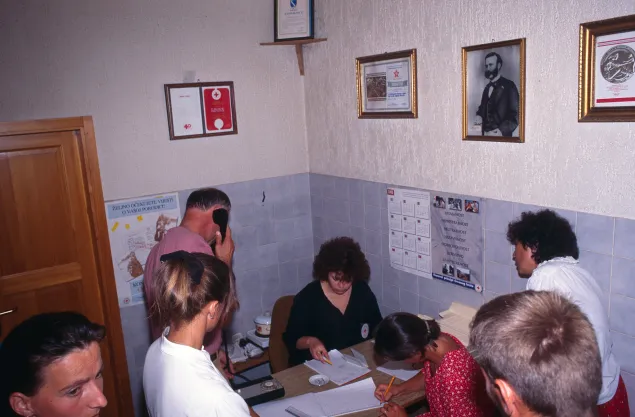
Red Cross tracing office, Tuzla region, Bosnia-Herzegovina, 1995.
Relatives of those who went missing at Srebrenica enquire about them.
After 11 July 1995, a census of everyone left behind in Srebrenica was quickly submitted to the authorities. Later, people were able to register missing family members.
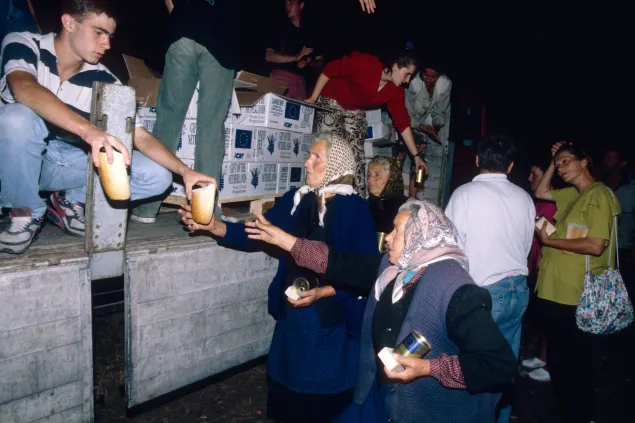
Bijeljina, Bosnia-Herzegovina, 17 August 1995.
Civilians were suffering all over Bosnia-Herzegovina. In this photo, emergency aid is distributed to those who fled to Bijeljina to escape the fighting in Banja Luka.
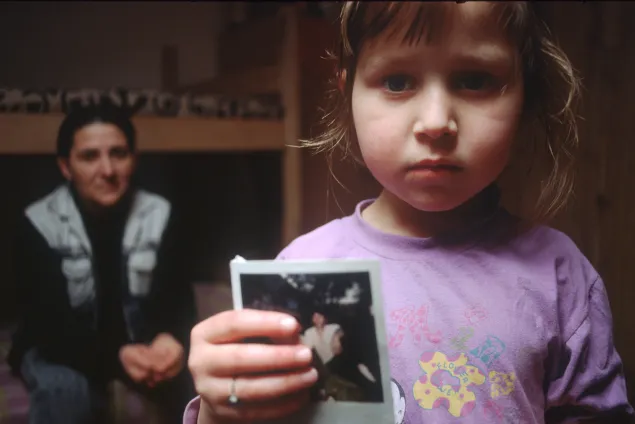
Tuzla, Bosnia-Herzegovina, January 1997.
Two years after the conflict ended, a little girl holds up the photo of a family member who went missing during the war. Today, 20 years later, over 10,000 people are still reported missing from the Balkans conflicts. Their families have no information as to what happened to them.
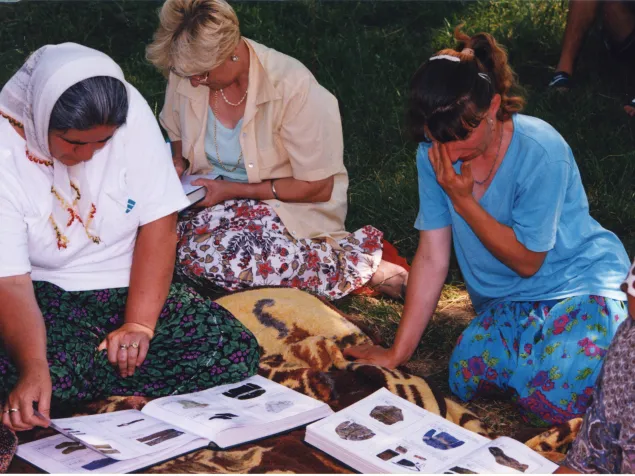
Srebrenica, Bosnia-Herzegovina, 2002.
For these three women, the ICRC "Book of belongings" is one of the few ways of searching for their missing relatives.
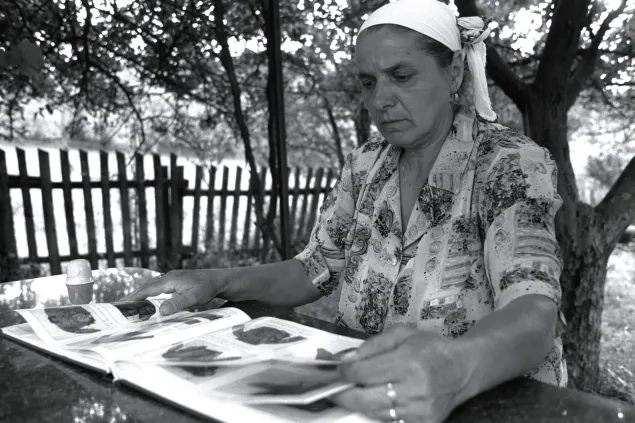
Srebrenica, Bosnia-Herzegovina, August 2002.
Dzidza’s husband and her two sons Almir and Azmir went missing at Srebrenica. This photo was taken in 2002. In 2007, Dzidza finally received news of her family's fate. The skeleton of one of her sons had been identified, but because the boys had been so close in age it proved impossible to determine if it had belonged to Almir or Azmir. All that remained of her husband was a single tibia.
11 July 2015 marks 20 years to the day since the massacre of almost 8,000 people in Srebrenica, during the conflict in Bosnia-Herzegovina. Those who escaped took refuge in nearby towns, many of them in a camp for displaced people at Tuzla airbase, which features in some of these photos. The Bosnia conflict ended in 1995, but many of those who disappeared are still missing. Two decades later, their families still bear the intolerable burden of not knowing.

